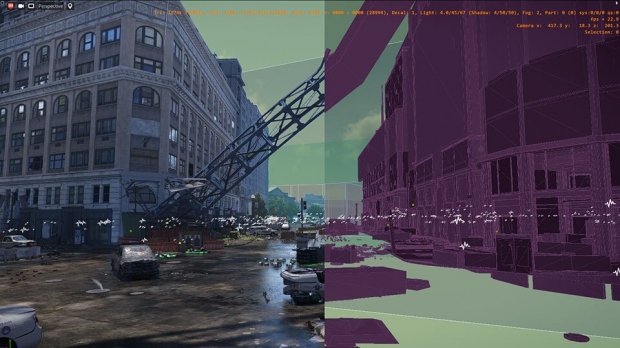Ubisoft Massive is working on new ray-traced audio systems in its proprietary Snowdrop Engine that will boost immersion in new games like Star Wars and its Avatar saga.
VIEW GALLERY – 2 IMAGES
Ubisoft’s Massive Entertainment studio recently posted up a rather technical article on Snowdrop’s new audio optimizations, and how the PlayStation 5 and Xbox Series X consoles will significantly improve how audio is not only streamed, but processed, by the engine itself. Right now Massive is working on two major titles–a new Star Wars open-world game, and an Avatar project–that will utilize these next-gen Snowdrop upgrades.
According Snowdrop Audio Architect Robert Bantin, the Navi RDNA 2.0 GPU in the PS5 and Series X will help free up the CPU for other tasks. Massive now has access to real-time ray-traced data generated by the GPU, which can be used to bake in audio without hitting the CPU. So certain sound effects are now “free” and won’t bog down the 8-core Zen 2 CPUs in both systems.
“More recently, though, we’ve been given access to the real-time ray-tracing data generated by the GPUs of these latest graphic cards. The fidelity is not quite there for reverberation, but certainly for sound obstruction testing, or window/door propagation, it’s almost free, because the information we need has already been worked out by the graphics renderer. That means we can probably do most of that work now without taxing the CPU at all,” Bantin said.
Bantin goes on to explain how the PCIe 4.0 SSDs in both systems significantly help streamline development flows and make his job a lot easier. The reasoning is the SSDs provide instant access to the data through ultra-fast PCIe Gen4 lanes (the PlayStation 5, for example, has a custom 12-channel memory controller across 4 lanes that allows 5.5GB/sec data transfers).
SSDs massively reduce asset loading across the board, including the loading of audio, which is essential for every scene in a game.

“With the previous generation of consoles, when you entered into a new area, we would have to pre-emptively load assets into memory, and part of that time spent loading was getting the audio cues and sound effects into the system memory so it could be accessed quickly – sounds that need to play back instantly, like impacts, gunshots and so on. The only things we could safely stream from disk were sounds that didn’t need low latency, like music tracks and ambiences,” Bantin said.
“When you have an SSD like these consoles have, you begin to realize that you don’t have to load most things into the system memory anymore, because the drives themselves are so fast. What you can end up doing is essentially stream a lot of sounds from the SSD on a need basis. Of course, some sounds that are getting accessed constantly, like gunshots or footsteps, may still be loaded in their entirety into system memory because of how often they occur, but a lot more sounds won’t need to be loaded in fully.
“Think of it like Netflix: Instead of having to download an entire movie before watching it, you’re able to stream the movie with only a small amount kept in memory at one time. The main difference in our case is our sound assets are constituent parts to the whole sound field, and those parts mostly won’t need to be fully loaded in now.”
Massive’s games may get extra boosts on the PlayStation 5 due to extra CPU power freed up by the console’s dedicated Tempest Engine, which can now do their work for them.
Bantin explains:
“With the PlayStation 5, Sony has almost duplicated the audio processing pipeline we designed for The Division 2, only on dedicated hardware called the Tempest Engine. This means that we’re likely going to move a lot of CPU-based audio processing over to that system, and of course that then frees up the CPU to do other things.”

Be the first to comment